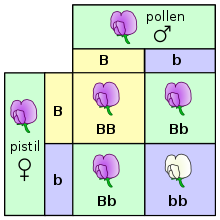What is not fully included in the current evolutionary model is the entropic force. This is a force generated by entropy and can be proven in the lab via osmosis. It is the fifth force of nature used extensively by life, but ignored within evolution. In an osmotic device, the diffusion of water in the direction of higher ionic concentration is due to an increase in entropy. The entropy of the universe has to increase and this direction of water flow increases the entropy so it helps the universe's entropy potential; spontaneously occurs. The osmotic pressure that is induced is osmotic force/area, since pressure equals force/area. This force is called the entropic force since it stems exclusively from entropy. Osmosis is considered a colligative property and is only dependent in molar concentration ions and not specific ions. It does not change with stronger or weaker ions but will generate the same entropic force.
Based on the shape of the osmotic device, the randomness of the entropy increase results in a directed force; order stemming from random. In the case of an osmotic device the force is directed opposite gravity. The living state makes use of the entropic force extensively via all its semi-permeable membranes and the movement of water. There is a sense of direction to life stemming from randomness going into an order generated by the entropic force. We live in a universe where entropy has to increase. In life, there are certain circumstances that maximize entropy better than others, with the amplifying sweet spots the goals of evolution.
The current biology approach primarily deals with the organic side of the equation. The organic is disproportionately stressed compared to the aqueous side, where the entropic force and liquid state physics plays a much more significant role. This approach creates a random bias, but lacks balance in terms of the entropic sense of direction.
For example, if you look at humans, there is a wide range of sizes, shapes and natural talents. This diversity appears random at the level of the individuals relative to the whole. But if you think in terms of the human team, this apparent variety has a practical value allowing a wider spectrum of talents for the improved adaptation of the collective whole. If there were only hunters there is a limit to how the collective can use that talent. If we have hunters, farmers, teachers, scientists, laborers, engineers, entertainers, etc., now the collective can advanced into even higher complex order. The more advanced collective order advances the individuals; civilization.
If we limited the individual randomization the group can't get as complete; amount of collective order is limited. The north is more work to live in than the south, because of winters. You need a more complex group for all the tasks so the whole can benefit the individual. White was able to randomize better and therefore had natural selection in terms of cultural order.
Based on the shape of the osmotic device, the randomness of the entropy increase results in a directed force; order stemming from random. In the case of an osmotic device the force is directed opposite gravity. The living state makes use of the entropic force extensively via all its semi-permeable membranes and the movement of water. There is a sense of direction to life stemming from randomness going into an order generated by the entropic force. We live in a universe where entropy has to increase. In life, there are certain circumstances that maximize entropy better than others, with the amplifying sweet spots the goals of evolution.
The current biology approach primarily deals with the organic side of the equation. The organic is disproportionately stressed compared to the aqueous side, where the entropic force and liquid state physics plays a much more significant role. This approach creates a random bias, but lacks balance in terms of the entropic sense of direction.
For example, if you look at humans, there is a wide range of sizes, shapes and natural talents. This diversity appears random at the level of the individuals relative to the whole. But if you think in terms of the human team, this apparent variety has a practical value allowing a wider spectrum of talents for the improved adaptation of the collective whole. If there were only hunters there is a limit to how the collective can use that talent. If we have hunters, farmers, teachers, scientists, laborers, engineers, entertainers, etc., now the collective can advanced into even higher complex order. The more advanced collective order advances the individuals; civilization.
If we limited the individual randomization the group can't get as complete; amount of collective order is limited. The north is more work to live in than the south, because of winters. You need a more complex group for all the tasks so the whole can benefit the individual. White was able to randomize better and therefore had natural selection in terms of cultural order.

